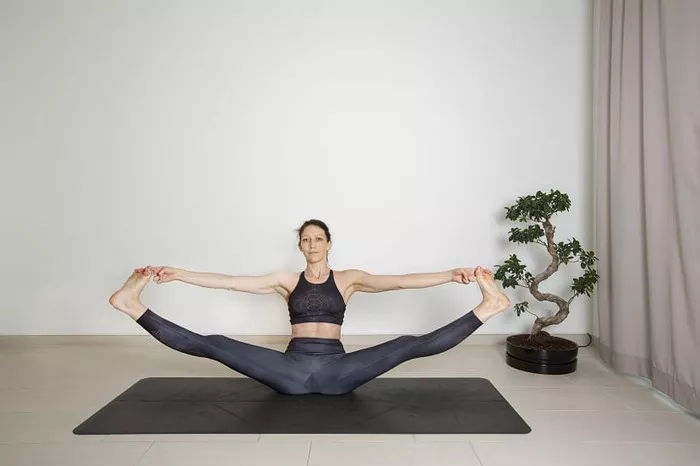Kriya Yoga, often hailed as one of the most profound systems of spiritual development, has captured the attention of yoga practitioners, spiritual seekers, and scholars alike. It is not merely a physical practice, but a comprehensive spiritual path that integrates mind, body, and spirit. Rooted in ancient traditions, Kriya Yoga has been widely popularized by great yogis, most notably Paramahansa Yogananda. His teachings, as outlined in the classic book Autobiography of a Yogi, have introduced millions to this powerful practice.
The essence of Kriya Yoga lies in the transformative techniques that facilitate personal growth, inner peace, and ultimately self-realization. This article explores the three key components of Kriya Yoga: Pranayama, Dhyana, and Kriya. By understanding these three parts, practitioners can begin to harness their power for spiritual awakening and healing.
1. Pranayama: The Art of Breath Control
Pranayama, the first component of Kriya Yoga, is derived from the Sanskrit words “Prana” (life force or breath) and “Ayama” (control or regulation). Simply put, Pranayama refers to the conscious regulation and control of the breath to elevate physical, mental, and spiritual well-being.
Breathing is one of the most fundamental aspects of life, and it plays a pivotal role in maintaining the equilibrium of the body and mind. The concept of Pranayama goes beyond just deep breathing techniques; it involves the cultivation of awareness over one’s breath patterns and utilizing this awareness to control and harness the life force within.
The Role of Breath in Pranayama
In Kriya Yoga, the breath is seen as the link between the body and mind. As we inhale and exhale, the breath carries not only oxygen into the body but also prana, the vital energy that sustains life. When the breath is calm and controlled, the mind becomes equally calm and balanced. In contrast, shallow and erratic breathing leads to emotional turbulence and mental unrest.
By learning how to regulate the breath, Pranayama practitioners can create a bridge between their conscious and unconscious minds, leading to an expansion of awareness. The process of consciously controlling breath patterns allows individuals to tap into deeper states of consciousness and activate their inner healing potential.
Pranayama Techniques in Kriya Yoga
There are various Pranayama techniques used in Kriya Yoga, each serving a specific purpose:
Kapalbhati (Skull Shining Breath): A rapid and forceful exhalation followed by passive inhalation, this technique is used to cleanse the respiratory system, stimulate the digestive system, and invigorate the mind.
Anulom Vilom (Alternate Nostril Breathing): This technique involves alternate nostril breathing, which helps in balancing the left and right hemispheres of the brain, harmonizing the energy flow in the body, and promoting mental clarity.
Bhastrika (Bellows Breath): Similar to Kapalbhati, Bhastrika is a more forceful technique that rapidly increases oxygen supply to the body and helps clear out toxins, revitalize the nervous system, and energize the body.
Ujjayi (Victorious Breath): This technique involves a slow, controlled inhale and exhale with slight constriction of the throat. It is known for calming the nervous system and promoting relaxation, making it particularly useful during meditation.
Each of these techniques, when practiced regularly, helps cultivate a deep sense of inner peace, vitality, and mental clarity, essential components for spiritual progress in Kriya Yoga.
2. Dhyana: The Path of Meditation
Dhyana, or meditation, is the second essential component of Kriya Yoga. The word “Dhyana” is derived from the Sanskrit root “Dhi,” meaning intellect or concentration, and the suffix “Ana,” which refers to a process or state. Dhyana is the practice of focused, uninterrupted attention and awareness, leading to inner stillness and deep contemplation.
In Kriya Yoga, meditation is considered a gateway to higher consciousness. While Pranayama prepares the body and mind by calming the breath and increasing prana, Dhyana takes the practitioner beyond the physical realm into the realm of pure awareness.
The Role of Meditation in Kriya Yoga
Meditation in Kriya Yoga serves as a tool to still the mind and move beyond the fluctuations of thoughts, emotions, and sensory distractions. In the state of meditation, the practitioner enters a zone of deep tranquility, where the mind is free from the usual chatter and distractions. This practice allows individuals to connect with their higher self, transcend ego limitations, and experience states of profound inner peace and bliss.
One of the central aims of meditation in Kriya Yoga is to achieve samadhi, or the ultimate state of enlightenment. This state of superconscious awareness is characterized by oneness with the divine, the dissolution of the ego, and an overwhelming sense of peace and unity with the universe.
Techniques of Meditation in Kriya Yoga
The meditation techniques used in Kriya Yoga vary, but they all share a common thread: the cultivation of deep concentration and awareness. Some of the main meditation techniques include:
Concentration on the Breath: This technique involves focusing attention on the natural flow of the breath, observing each inhalation and exhalation. This form of mindfulness meditation helps the practitioner center their mind and cultivate a deep state of awareness.
Visualization: In Kriya Yoga, visualization is often employed as a means of directing the mind toward specific spiritual goals. Practitioners may visualize energy moving along the spine, experiencing the awakening of the chakras, or envisioning light and energy merging with the divine.
Mantra Meditation: The repetition of sacred sounds or mantras is another key technique used in Kriya Yoga meditation. By focusing on a mantra, the practitioner’s mind becomes absorbed in the vibrational frequency of the sound, gradually quieting the mental chatter and allowing the practitioner to experience a deeper sense of inner calm.
Dhyana with Kriya Pranayama: In advanced stages of Kriya Yoga, meditation and Pranayama are often practiced together. The practitioner combines specific breath control techniques with meditation to intensify the flow of prana, deepen concentration, and move toward higher states of consciousness.
3. Kriya: The Secret Science of Spiritual Energy
The third and most distinct component of Kriya Yoga is the practice of Kriya itself, which is often referred to as the “secret science of spiritual energy.” Kriya, in essence, is a set of advanced techniques that focus on controlling and directing the flow of prana within the body to accelerate spiritual growth. These techniques involve the conscious manipulation of energy through breath, movement, and mental focus, resulting in the purification of the body and mind.
The Concept of Energy and Prana in Kriya Yoga
At the core of Kriya is the understanding of prana, or vital energy. Just as the body requires oxygen to function, it also requires prana to maintain life. In Kriya Yoga, the goal is to learn how to direct prana to specific areas of the body, cleanse energetic blockages, and awaken higher states of consciousness.
According to yogic philosophy, prana flows through channels in the body known as nadis and is centered in energy centers called chakras. When prana flows freely, the body and mind are healthy and harmonious. However, when prana becomes stagnant or blocked, it leads to physical and mental health issues, as well as spiritual stagnation.
Kriya Yoga techniques are designed to help the practitioner harness prana and direct it along the spine to activate and purify the chakras, ultimately leading to greater vitality, mental clarity, and spiritual awakening.
Techniques of Kriya in Kriya Yoga
There are various specific Kriya techniques that can be used to harness and direct prana. Some of these include:
Kriya Pranayama: This is the central technique of Kriya Yoga, where the practitioner learns to control the breath in such a way that it directs prana along the spinal column. Through Kriya Pranayama, practitioners can purify the nervous system, balance the mind, and awaken the dormant spiritual energy (Kundalini) within.
Pranayama with Mudras and Bandhas: Kriya Yoga also incorporates specific hand gestures (mudras) and body locks (bandhas) to direct and concentrate prana. These techniques increase the flow of energy and help the practitioner maintain the proper alignment of energy during meditation and breath control.
Kundalini Awakening: One of the ultimate goals of Kriya Yoga is the awakening of Kundalini energy, which is said to reside at the base of the spine. When this energy is awakened through specific Kriya techniques, it ascends through the chakras, leading to spiritual enlightenment and profound states of bliss.
Conclusion
Kriya Yoga is a deeply transformative practice that offers a complete system for self-realization. It is based on the understanding of energy, breath, and meditation, and serves as a powerful tool for spiritual growth. The three parts of Kriya Yoga—Pranayama, Dhyana, and Kriya—work synergistically to cultivate balance and harmony within the body and mind, ultimately leading to a state of profound inner peace, heightened awareness, and spiritual awakening.
By incorporating these practices into your daily routine, you can experience not only physical vitality but also emotional and spiritual healing. The path of Kriya Yoga, while challenging, offers a profound journey toward greater self-realization, inner joy, and a deeper connection to the divine essence within you. Whether you’re a beginner or an experienced practitioner, Kriya Yoga provides a time-tested approach to self-discovery and spiritual growth, helping you tap into the limitless potential that lies within.
Related Topics:












